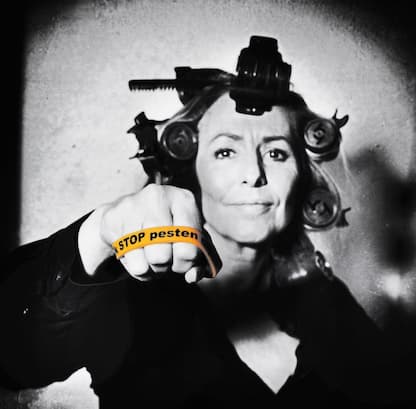Summary and Recommendations
Bullying has often been called a problem in the peer relationship network (Salmivalli 2010), but Bronfenbrenner’s bioecological model of human development shows that it is rooted in multiple levels of the human ecology. While previous ecological analyses focused predominantly on school-level dynamics, this examination adds important levels of the developing person, and the larger exo-, macro-, and chronosystems where intervention efforts must also take place. Such a bioecological analysis leads to several recommendations.
Read full report in PDF
First, the USA needs to decide to take the needs of children seriously. Our poor international standing suggests that the declining mental health of our students is due, at least in part, to the choices we make as a nation. The USA should make children’s well-being central to policy decisions. This is fiscally beneficial and more sustainable for the society and the economy.
Second, we must acknowledge that emotions and feelings matter. Research across multiple fields increasingly places the emotion system at the heart of development. Evidence shows that the environment has a role in shaping children’s emotion systems, and in turn, altering the life course into adulthood, and that SEL can be taught effectively in schools (Aspen Institute 2018).
Third, schools should take on the responsibility of intentionally co-constructing children’s emotional and social lives from pre-k through the 12th-grade. Even in its nascent state, the research on a universal approach to SEL suggests that it can boost a school’s “immune system” by improving some aspects of children’s mental health and learning, preventing some problems from occurring, and helping a classroom or school to function more efficiently and positively.
Fourth, an SEL approach should balance the development of personal emotional and interpersonal social skills. SEL should not be a Trojan horse for increasing classroom management and social control, but should focus on authentically cultivating the positive, full development of the child and the adult educator, including caregivers. This requires reframing classroom management from emphasizing behavioral control to cultivating psychological health. Two reviews of SEL programs for preschool and elementary school show that many more programs focus on social skills, social problem-solving, conflict resolution, academic skills, and conduct issues, rather than improving individual emotion skills (CASEL 2013; Jones et al. 2017). Emotional intelligence in children and adults enhances their thinking and learning, relationships, decision-making, and mental and physical health (Brackett et al. 2016). Personal emotional skills are also fundamental to developing agency and autonomy required for resilience, so when bullying or other stressful life events occur, ill effects can be mitigated (Hinduja and Patchin 2017).
Fifth, the adoption of a universal SEL approach should occur in the context of a tiered public health model. This means that in addition to universal SEL education in tier 1, schools should coordinate with more skilled local mental health professionals for tier 2 and tier 3 interventions for at-risk children and families. At tier 1, a universal SEL approach will promote the skills that foster intra- and interpersonal well-being and will address normal challenges and difficult feelings and behaviors that arise in children that do not require outside intervention. These issues may include managing unpleasant feelings and impulses, friction from changing friendships, accidentally hurting someone’s feelings, and experimenting with power, micro-aggressions, manipulations, and humiliations. However, once bullying, harassment, or school violence occurs, a more differentiated response is required at a tier 2 or tier 3 level of intervention. This broader focus will require coordination between previously separate practitioners, teachers, and educational leaders.
Sixth, adult development should be prioritized before child development. Children’s development is co-constructed and scaffolded through interactions with others, and proximal processes with others are the “engines of development.” Children can learn some SEL skills in a didactic, de-contextualized format, but they also need to have the lived experience of emotional and social skill building via real-time relationships. Therefore, adults need to be competent in their own emotional and social skills, including self-awareness, interpersonal problem-solving, and conflict resolution in order to model the skills, and co-construct skills in others. Therefore, SEL should be incorporated upstream into pre-service teacher training, as well as ongoing professional development. It also should be infused district-wide and embodied by everyone from leaders to transportation staff. Families (including siblings) should have access to ongoing training and support, but this component needs further research, as it has not been well-explored in any SEL program.
Seventh, programs should be developmentally wise. This means not simply scaling a one-size-fits-all to different ages, but tailoring curriculum to the salient emotional and social issues that arise during sensitive developmental phases, and basing pedagogy on cognitive, emotional, social, and moral development accordingly. This may mean that programs are qualitatively different at different ages. Programs should also be flexible and specific to allow diverse individuals and communities to adapt different but relevant means to the same ends. Programs may have a didactic component, but at a minimum SEL goals and skills should be continually enacted and refined in the everyday, lived experience of school life.
Eighth, SEL approaches need to be culturally sensitive. SEL practices developed and implemented within a Western culture may not sufficiently address cultural subgroups and might alienate students from different backgrounds (CASEL 2013). For example, more than 160 different languages are spoken by students and their families in New York City public schools, and norms related to social and emotional skills vary greatly by culture. This includes the rules related to social interactions and relationships that vary according to race, ethnicity, language, and religion (see Simmons et al. 2018; Aspen Institute 2018).
Ninth, more research is needed on the intersection of bullying prevention and SEL program implementation. For example, limited research exists on effective practices that promote school leader, teacher, and parent buy-in for SEL programming as a method to decrease bullying. More research also is necessary on the key ingredients of high-quality implementation of SEL practices to prevent bullying, aggression, and other negative behaviors. This only can be established with a comprehensive research agenda focusing on SEL practices, SEL program fidelity, long-term sustainability in schools and districts, and demonstrated impact on bullying behavior and other key outcomes such as improved school climate.
Schools cannot do this alone. Systems outside the schools, particularly in the meso-, exo-, and macro-systems, need to align with these developmental goals for children. This may mean that schools become a “hub” of meso-system networks including education for families, coaches, teachers, and more, as well as navigators for local professionals and social services for tiers 2 and 3 care. It may mean changing university education department curricula to develop teachers as whole people. It may mean fostering adult emotional skill competence in workplaces, and raising awareness about workplace bullying, aggression, and harassment. It may mean providing extra resources to neighborhoods and communities in need. It may mean changing mindsets about how children grow and develop—that they become better adults through positively cultivating their capabilities, rather than harshly punishing their imperfections. It may mean improving harmful cultures of masculinity, feminine objectification, “differentness,” and violence-saturated media. And it may mean paying attention to the unintended consequences of US macro-level policies that contribute to rising inequality, as well as other policies undermining the ability of families and educators to tend to the “gardens” in which our children grow. Bronfenbrenner pointed out that “There is no more critical indicator of the future of a society than the character, competence, and integrity of its youth” (Bronfenbrenner 1996, p.1).
Notes
- 1.
Bullying is a repetitious, intentionally aggressive pattern of behavior involving a power imbalance. It may inflict physical, psychological, social, or educational harm. It can be physical or verbal and may occur face-to-face or via technology (Gladden et al. 2014).
- 2.
The most recent survey by the U.S. Department of Education (Lessne and Yanez 2016) showed a decrease in overall bullying, but middle school rates stayed the same. Other negative indicators such as verbal abuse of teachers, sexual harassment, and student fear decreased slightly.
Divecha, D., Brackett, M. Rethinking School-Based Bullying Prevention Through the Lens of Social and Emotional Learning: a Bioecological Perspective. Int Journal of Bullying Prevention 2, 93–113 (2020). https://doi.org/10.1007/s42380-019-00019-5
Published
Issue Date
Kenniscentrum Pesten per doelgroep
Stichting Stop Pesten Nu vertrouwt volledig op vrijwillige donaties en de inzet van vrijwilligers om haar belangrijke werk mogelijk te maken. Wij ontvangen geen subsidies, waardoor wij volledig afhankelijk zijn van de steun van mensen zoals u.
Tip van de redactie! Heb je haast? Navigeer dan snel naar:

► Scholen & Professionals Kenniscentrum Pesten in het Onderwijs
- Of navigeer direct naar de informatie per functionaris: Schooldirectie & MT / Anti-pest coördinator / Leerkracht / Mentor / Ouderraad & MR
- Leerlingen & opvoeders: Kinderen & Jongeren (Leerlingen) / Ouders & Opvoeders
► Sportverenigingen Kenniscentrum Pesten in de Sport
- Of navigeer direct naar de informatie per functionaris: Bestuurders / Coaches, Trainers & Begeleiders / (Top)Sporters & Scheidsrechters
- Jonge leden & ouders Kinderen & Jongeren (Leerlingen) / Ouders & Opvoeders
► Werkgevers Kenniscentrum Pesten op het Werk
- Of navigeer direct naar de informatie per functionaris: Directie en bestuurders / HRM / MT en Leidinggevenden / Medewerkers / Ondernemersraden / Vertrouwenspersonen
► Ouderen Kenniscentrum Pesten in Woonzorgcentra

Breng snel een bezoekje aan ...
► Kenniscentrum (Klassiek) Pesten
► Kenniscentrum Online pesten (cyberpesten)
► Kennisbank & Downloadcentrum o.a. Beleid & Factsheets / Handleidingen / Lesmaterialen / Posters / Wetenschappelijke Onderzoeken
► Ik word gepest, wat kan ik doen



